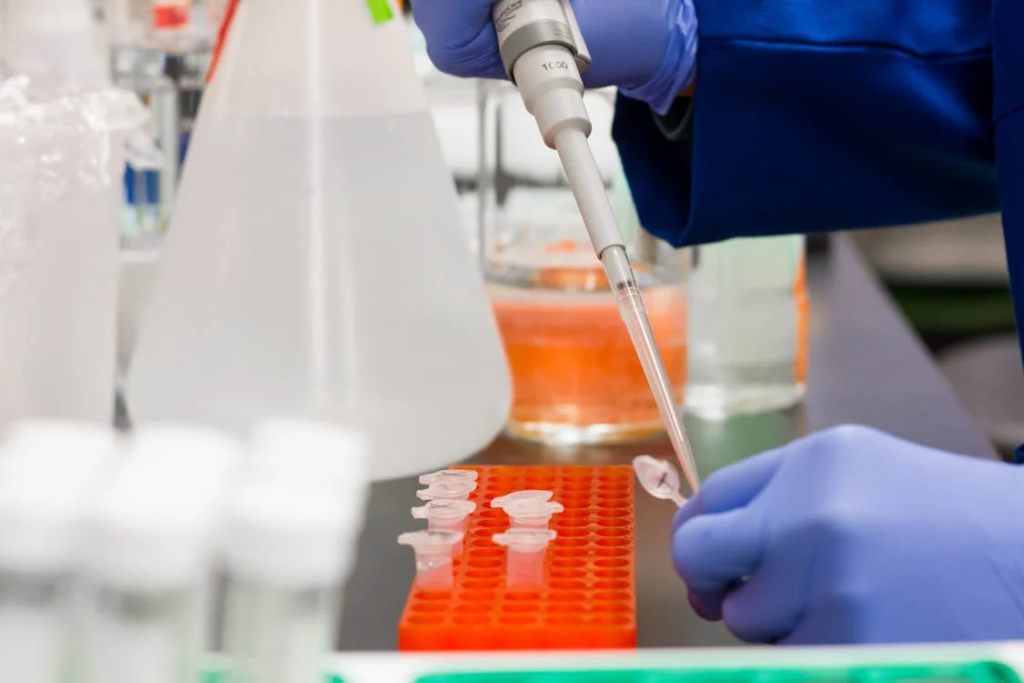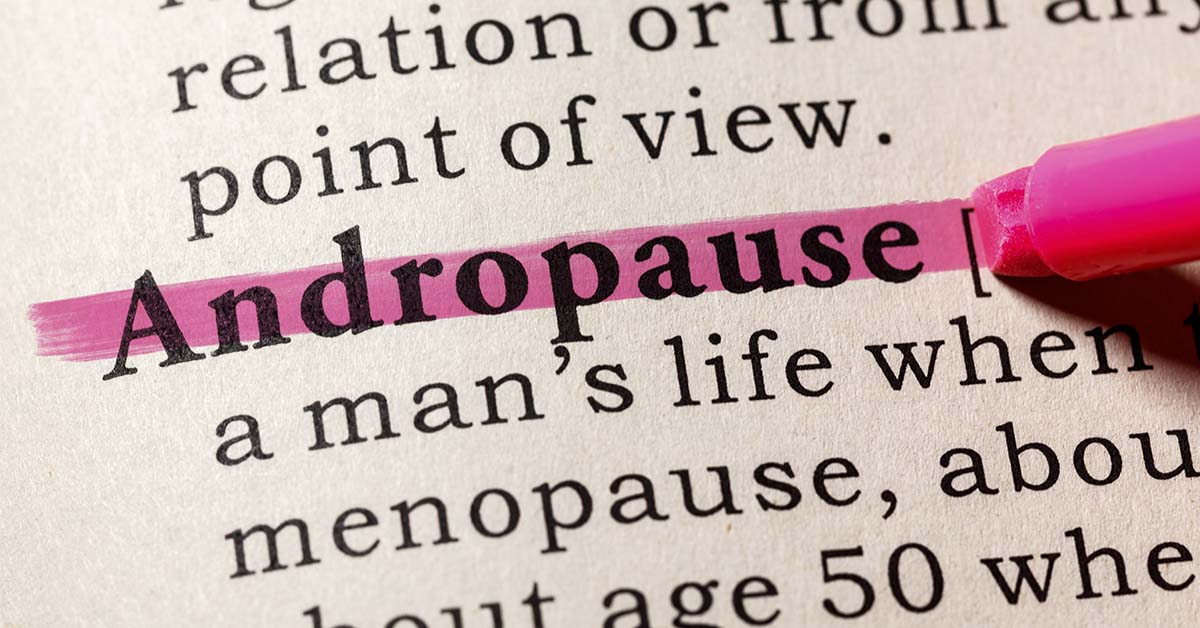Andropause describes an age-related reduction of testosterone in men. This condition affects males assigned at birth who are typically 50 years or older. Medical professionals also refer to this condition as testosterone deficiency, androgen deficiency, and late-onset hypogonadism. Unlike female menopause, andropause involves a gradual decline rather than an abrupt hormonal shift.
The condition occurs when testosterone production drops substantially with age. Testosterone serves multiple functions beyond just fuelling your sex drive. It also functions in maintaining muscle mass, regulating energy levels, and supporting bone density. Not all men experience andropause symptoms, making it less universal than female menopause. Research indicates that only 2% of aging men suffer symptoms meeting the diagnostic criteria of andropause.
How Andropause Differs from Female Menopause

Male menopause differs substantially from female menopause in several fundamental ways. Female menopause involves a complete shutdown of reproductive organs within a relatively short timeframe. Male hormonal changes occur gradually over many years without completely stopping reproductive function. This means while men may experience symptoms linked to “male menopause”, the condition does not affect fertility. Women experience a dramatic drop in estrogen and progesterone production during menopause.
Men experience testosterone decline at approximately 1% per year after age 40. This gradual reduction contrasts sharply with the rapid hormonal changes women face. Additionally, not every man is affected by andropause, while practically all women experience, or will experience, menopause. The symptoms also emerge more slowly and subtly in men compared to women.
Common Symptoms and Warning Signs

Men experiencing andropause may develop various physical and psychological symptoms. The most notable changes that can be observed include decreased libido, fewer morning erections, and erectile dysfunction. These three sexual symptoms together provide the strongest diagnostic criteria for the condition. Other common symptoms include fatigue, depression, mood swings, and improper sleep.
Physical changes often include increased body fat, particularly around the abdomen and chest. Men may experience decreased muscle mass, reduced bone density, and feelings of physical weakness. Some men develop gynecomastia or “man boobs”. Other symptoms that can develop include difficulty concentrating, low self-esteem, and decreased motivation.
Read More: Adrenal Fatigue: Myth or the Hidden Cause of Your Fatigue?
The Science Behind Testosterone Decline

Testosterone levels naturally decline as men age, beginning around age 30 to 40. Total testosterone levels fall at an average rate of 1.6% per year. Free and bioavailable testosterone levels decrease even more rapidly at 2-3% annually. By age 75, men typically lose about 30% of their peak testosterone levels. As men age, their bodies make less testosterone and remove it more slowly from their system.
Risk Factors and Contributing Causes

There are several factors that increase the risk of developing andropause symptoms. Obesity is a risk factor, contributing to testosterone decline and symptom severity. Men with diabetes, heart disease, and sleep apnea face higher risks. Poor lifestyle choices including smoking, excessive alcohol consumption, and lack of exercise worsen symptoms and increase risk.
Psychological factors also have an impact on symptom development. Stress, anxiety, and depression can lower testosterone levels and amplify symptoms. Work-related pressures, relationship problems, and financial issues play a role in causing hormonal imbalances. Some men experience midlife crises that trigger depression and related physical symptoms. Genetic factors may influence timing and severity of hormonal changes.
Diagnosis and Medical Evaluation

Doctors measure testosterone levels through blood tests taken in the morning on multiple days. Mass spectrometry provides more accurate results than standard immunoassays for testosterone measurement. Normal testosterone levels vary noticeably between individuals and throughout the day.
Medical professionals must rule out other conditions causing similar symptoms. Low testosterone alone without symptoms does not immediately lead to a diagnosis of hypogonadism. The European Male Aging Study defines the condition requiring three sexual symptoms plus testosterone below 11 nmol/L. Doctors also evaluate for underlying medical conditions like diabetes, heart disease, and sleep disorders.
Treatment Options and Approaches

Treatment for andropause varies based on symptom severity and other potential underlying causes. Many men manage symptoms without medical intervention through lifestyle changes. Testosterone replacement therapy represents the primary medical treatment option for severe cases. This therapy can involve injections, gels, patches, or oral medications.
Hormone replacement therapy remains controversial due to potential side effects. Testosterone therapy may increase prostate cancer risk and cause heart complications. Recent studies suggest testosterone replacement doesn’t increase major cardiac risks when properly monitored. Doctors carefully weigh benefits against risks before recommending hormone therapy. Alternative treatments include antidepressants for mood symptoms and counseling for psychological issues.
Read More: Is The Current Approach To Obesity Working?
Lifestyle Changes for Management

Lifestyle changes are the foundation of andropause management for most men. Regular exercise helps maintain muscle mass, improve mood, and boost natural testosterone production. A healthy diet supports hormone balance and overall health. Adequate sleep proves essential for optimal testosterone production and energy levels.
Stress reduction methods vastly improve symptoms and hormone balance. Men could benefit from meditation, relaxation exercises, and stress management strategies. Maintaining a healthy body weight helps optimize testosterone levels naturally. Avoiding excessive alcohol consumption and quitting smoking helps support good health.
Prognosis and Living with Andropause

The outlook for men with andropause remains generally positive with proper management. Many men find symptoms manageable even without specific medical treatment. Men who maintain healthy lifestyles typically experience better outcomes and fewer complications. With appropriate care, most men successfully manage andropause symptoms while maintaining active, fulfilling lives.
Disclaimer: This information is not intended to be a substitute for professional medical advice, diagnosis or treatment and is for information only. Always seek the advice of your physician or another qualified health provider with any questions about your medical condition and/or current medication. Do not disregard professional medical advice or delay seeking advice or treatment because of something you have read here.
Read More: Menopause Could Explain Human Evolution—and Lead to a New Role for Women

